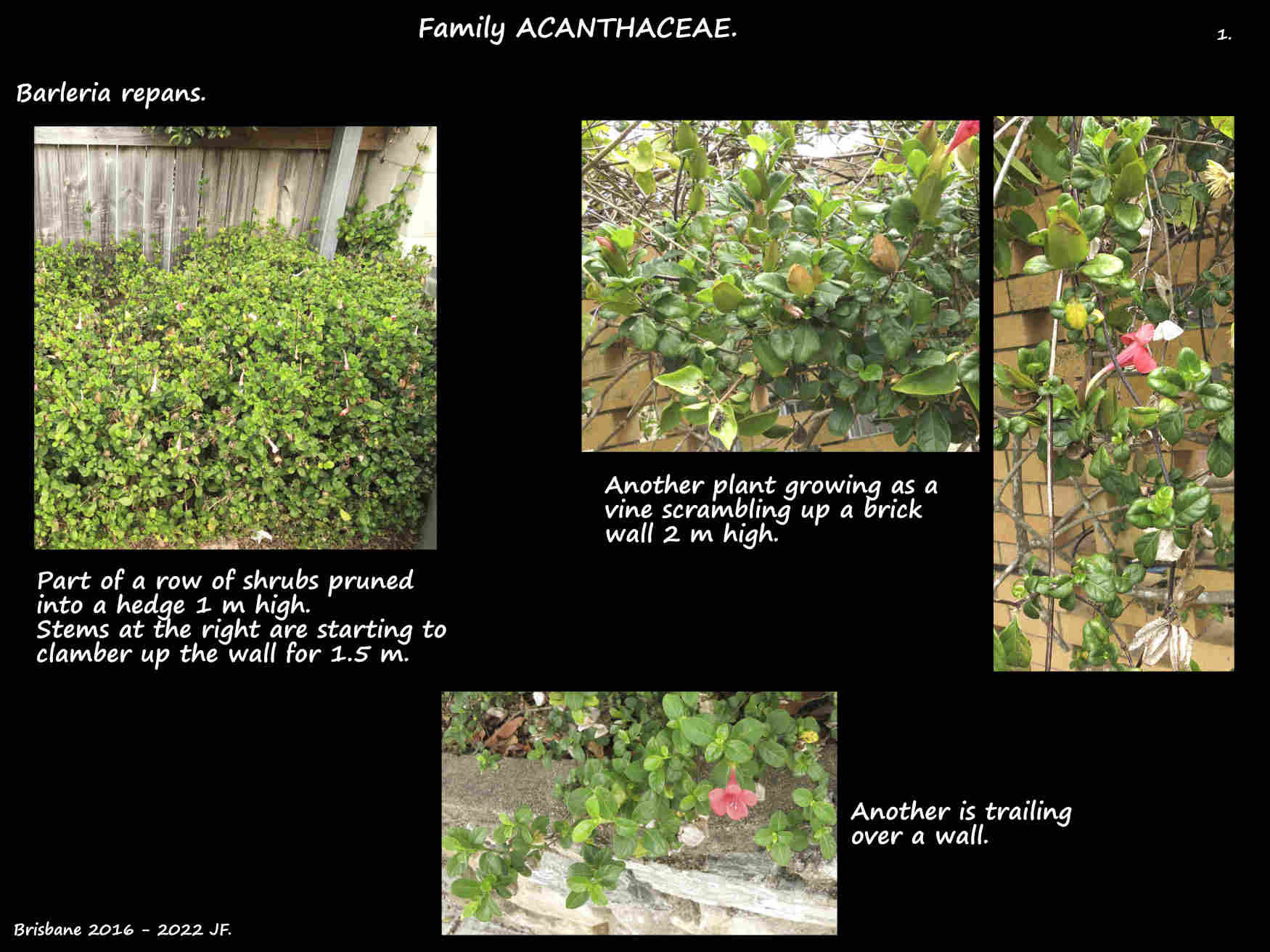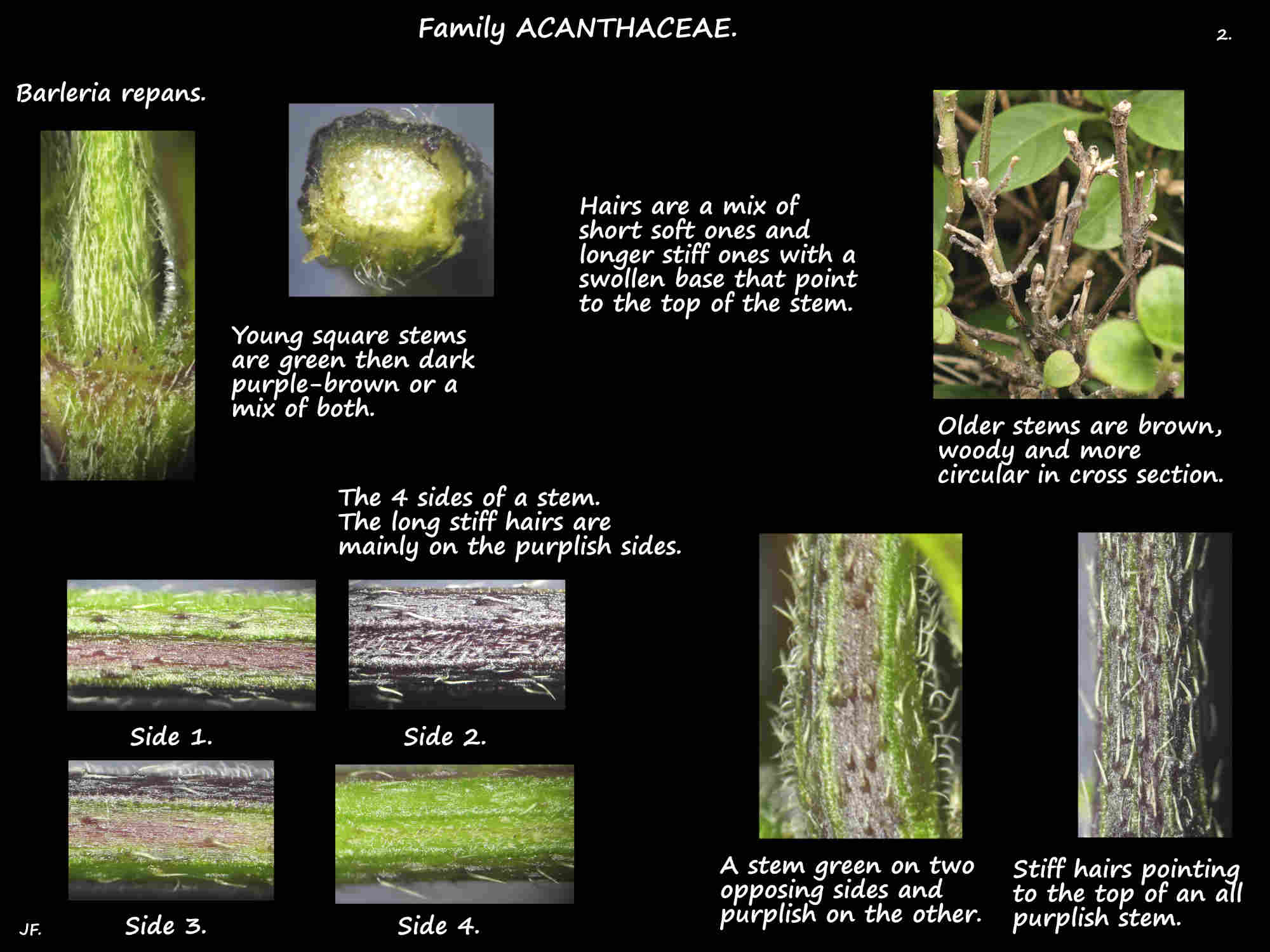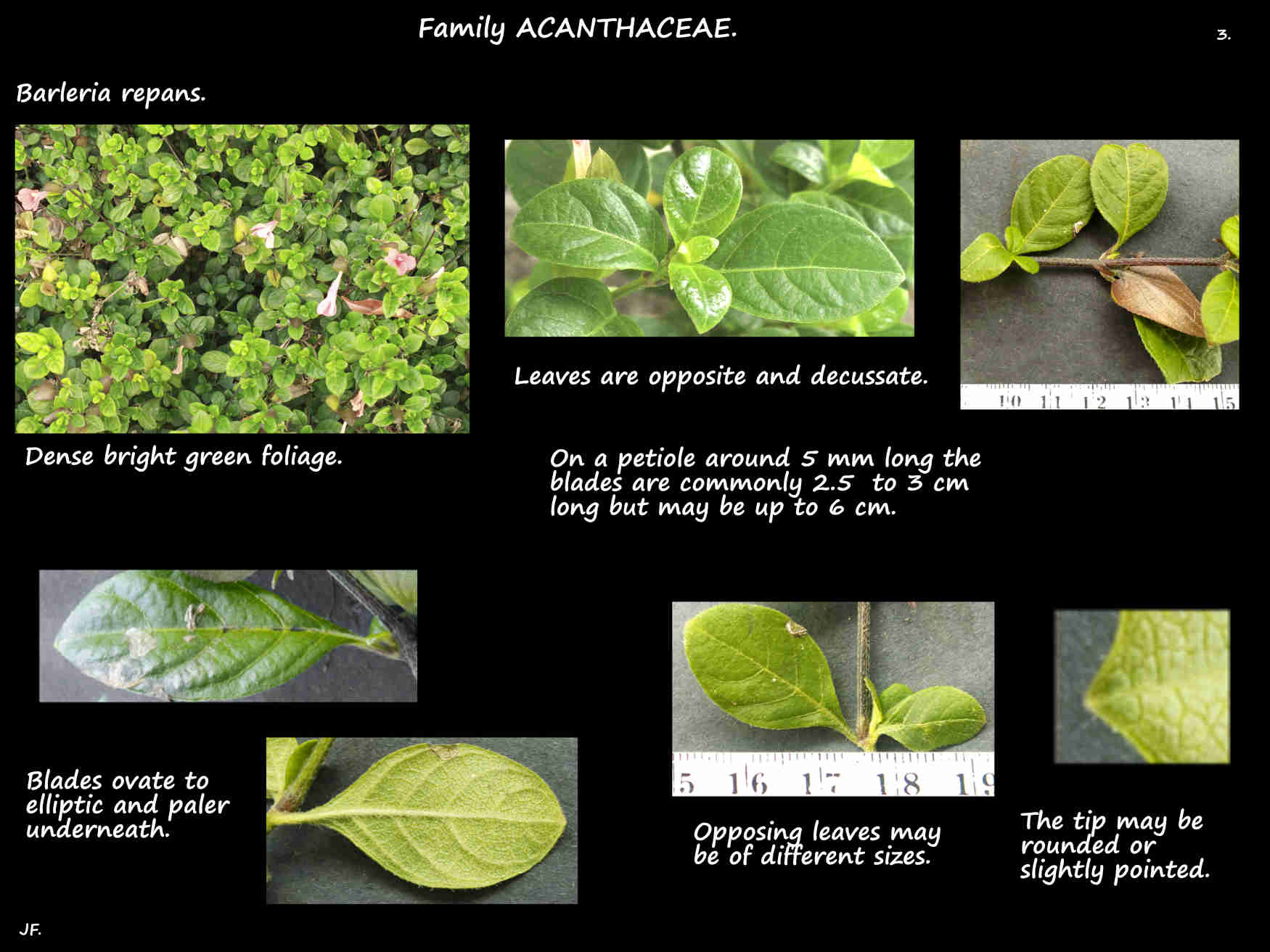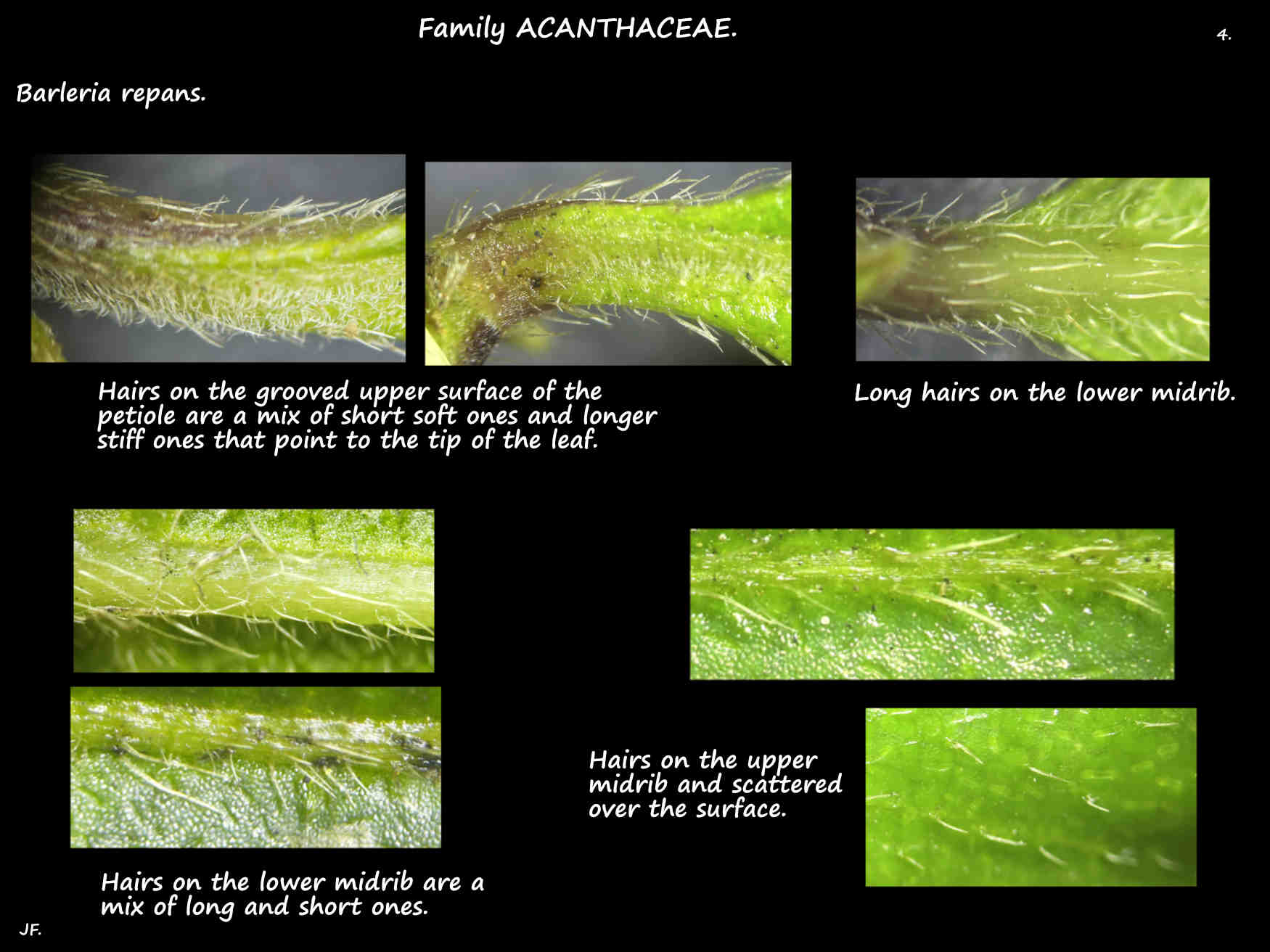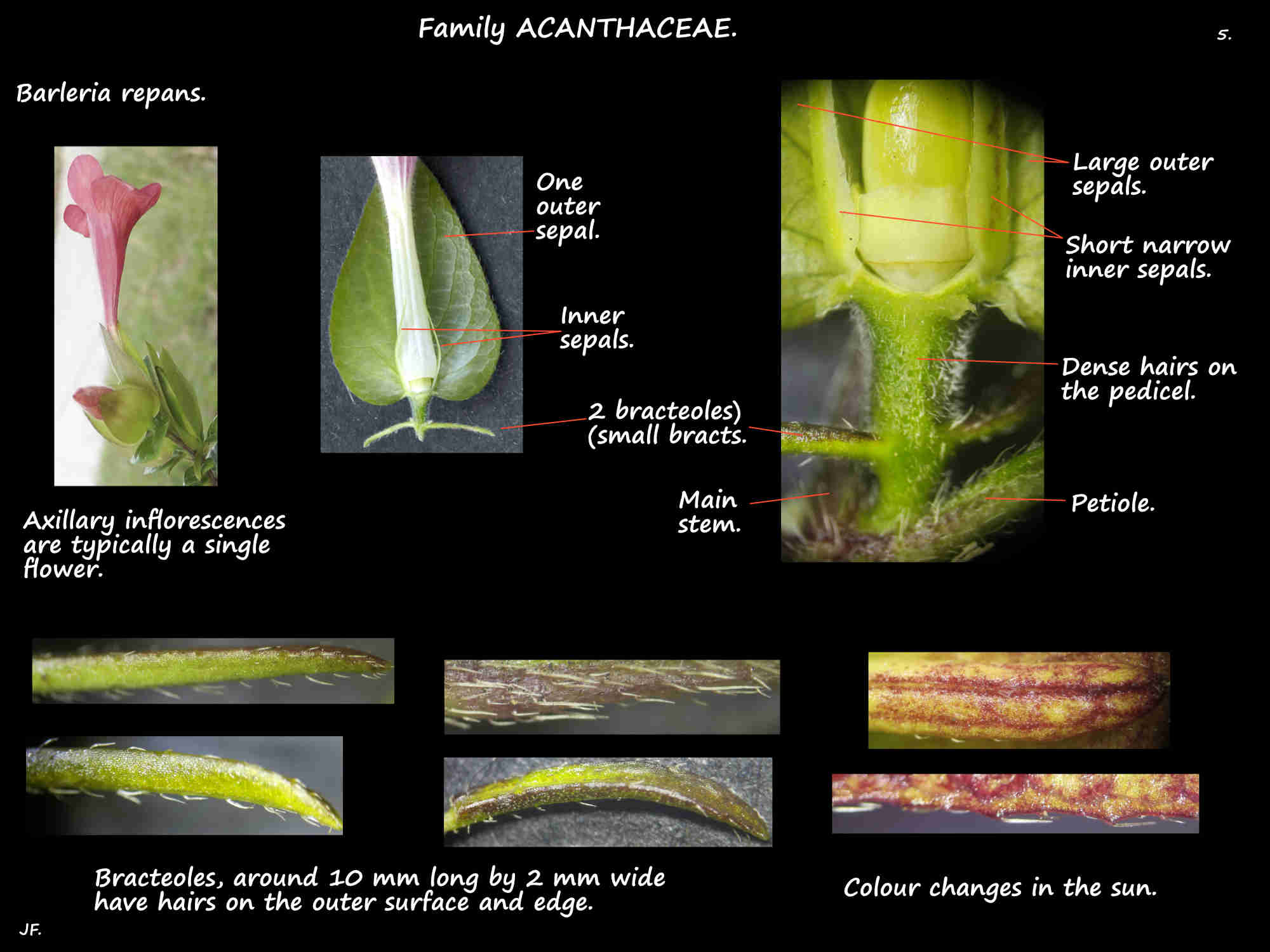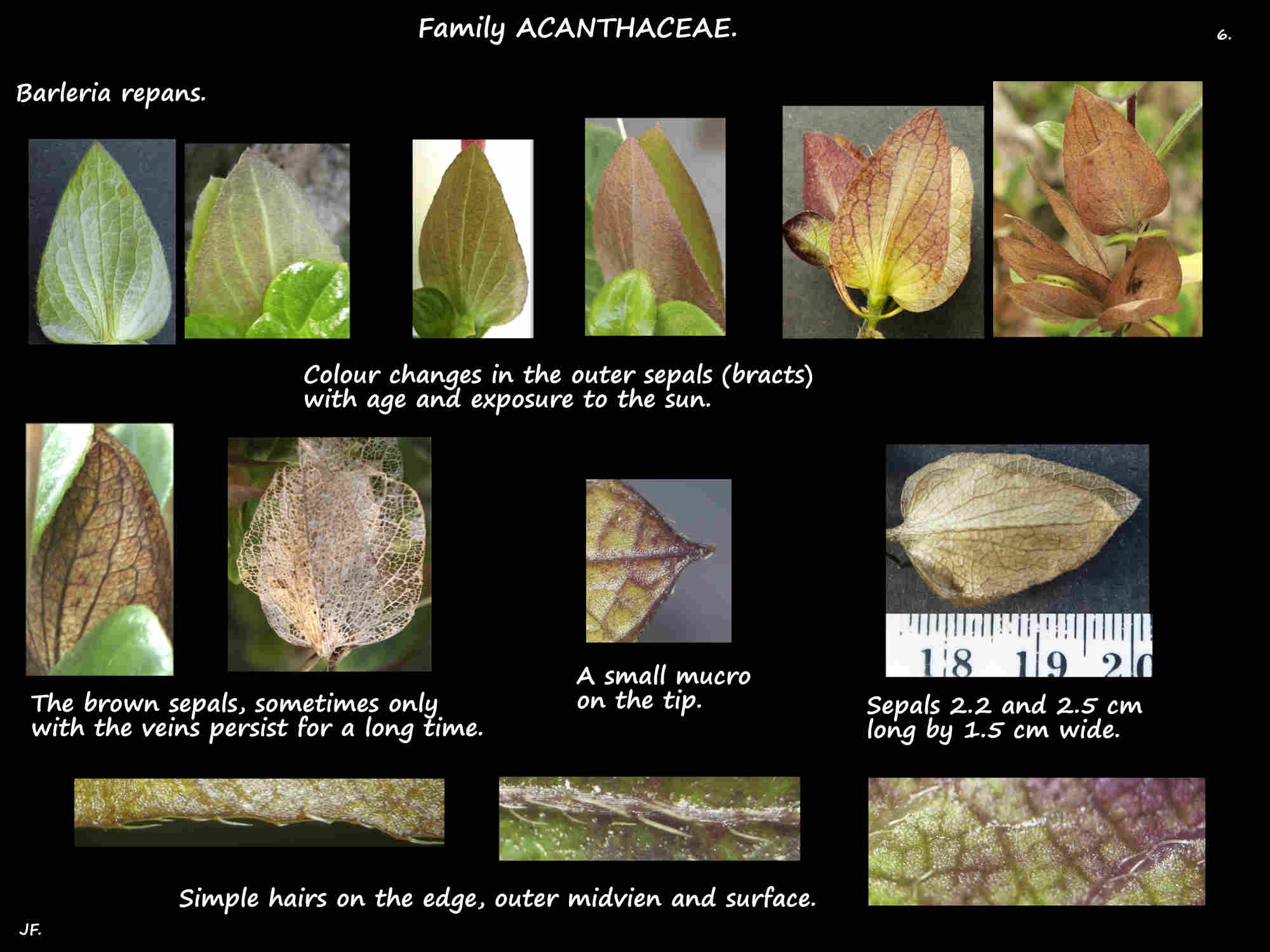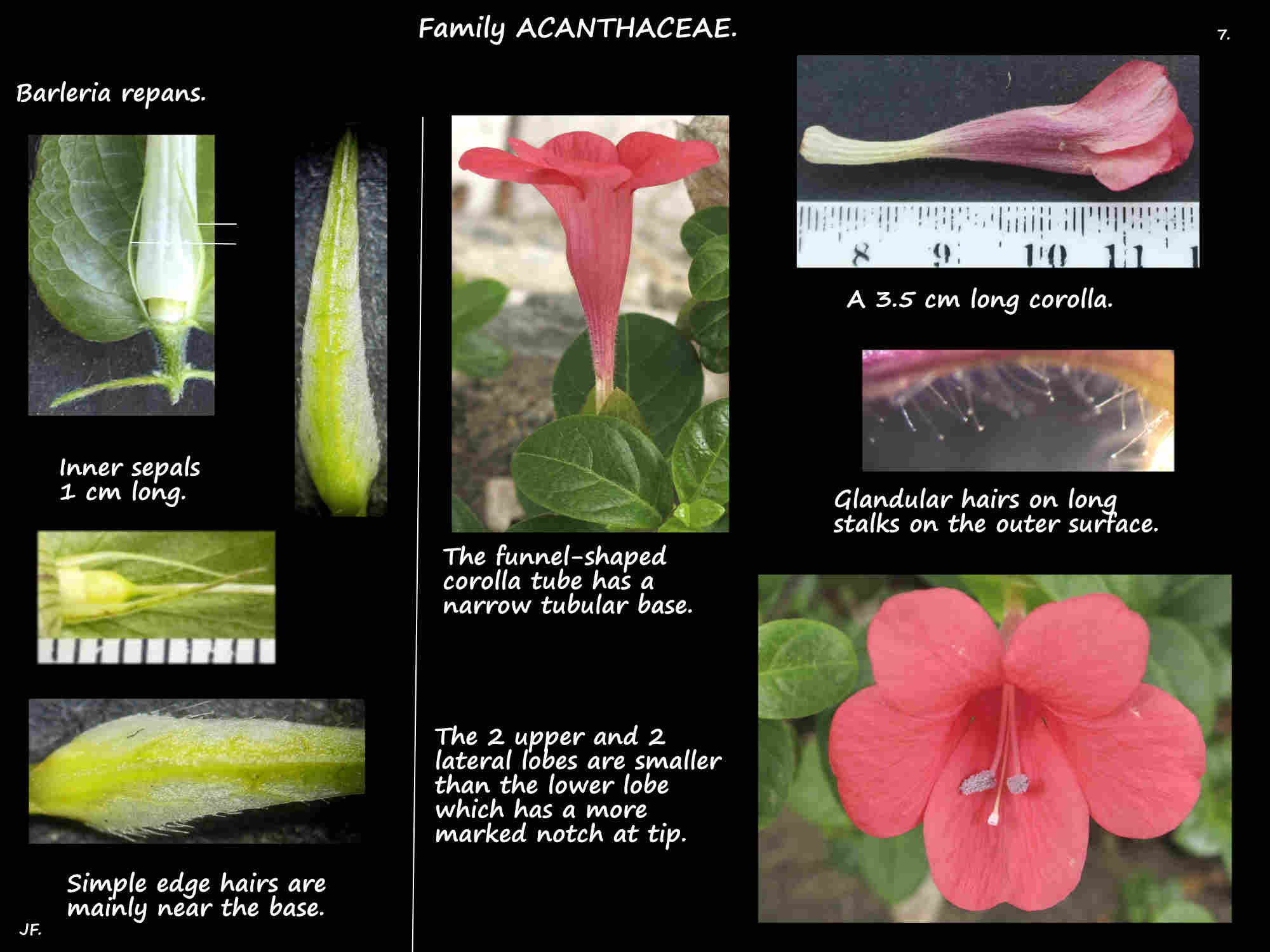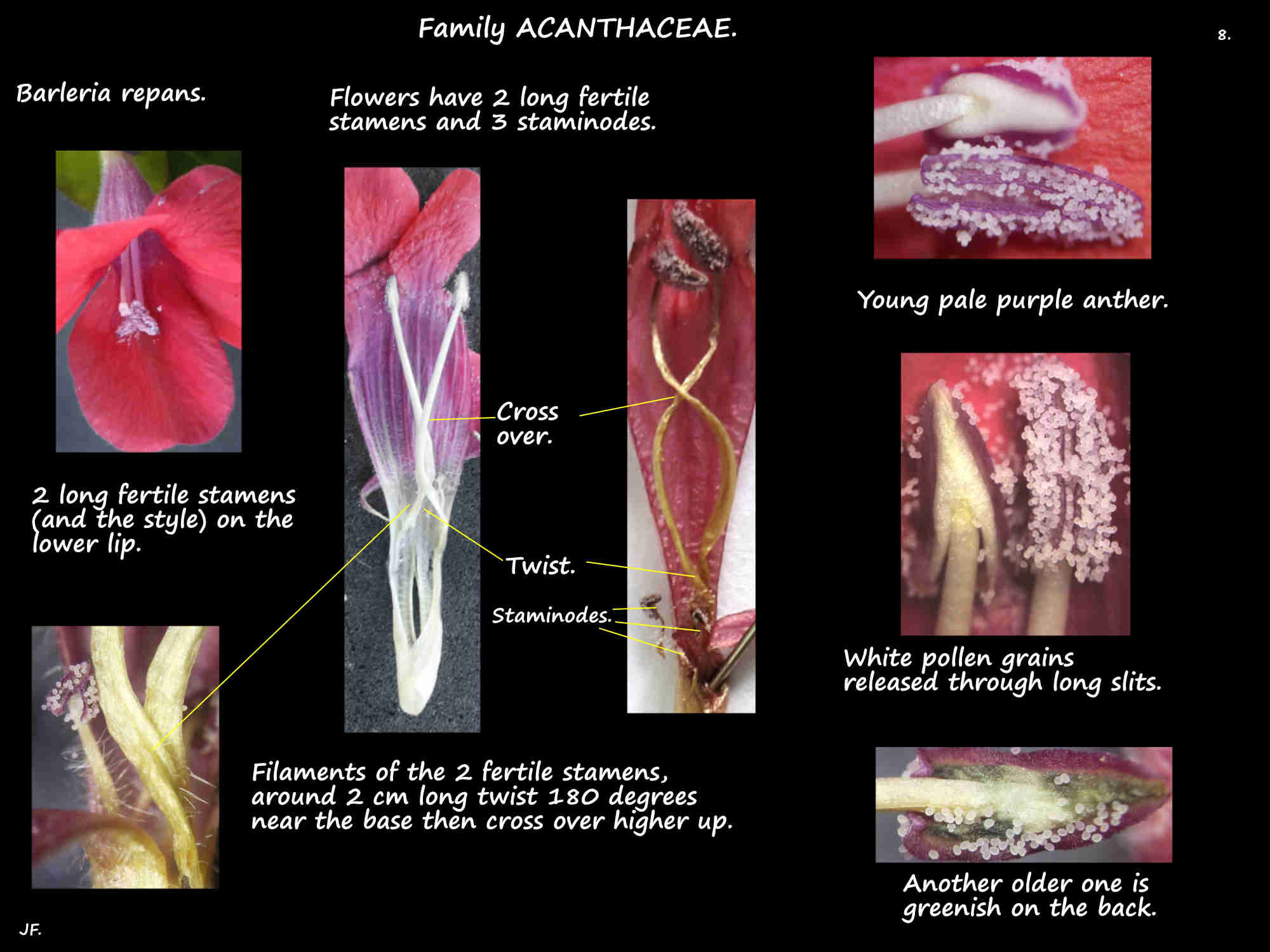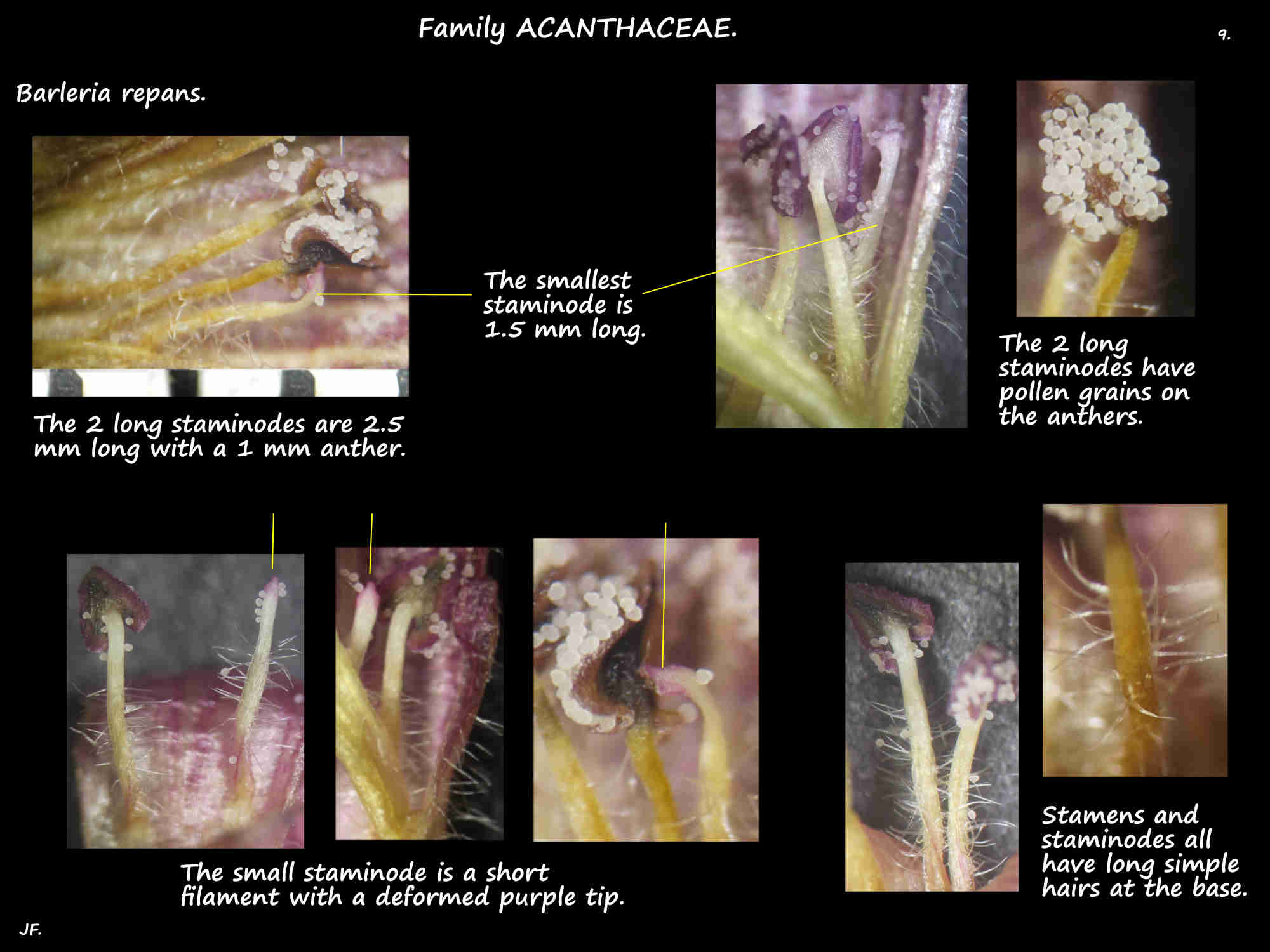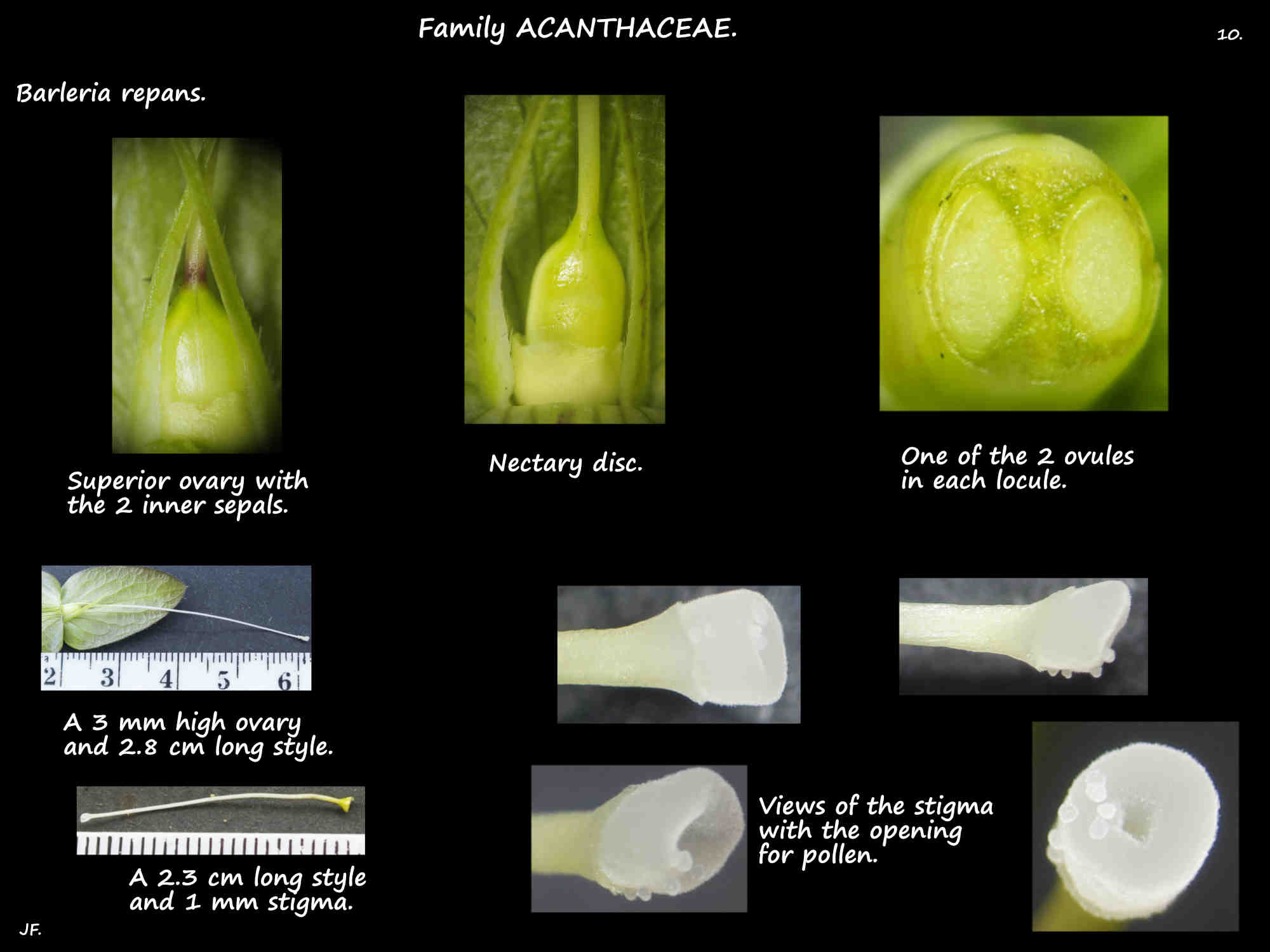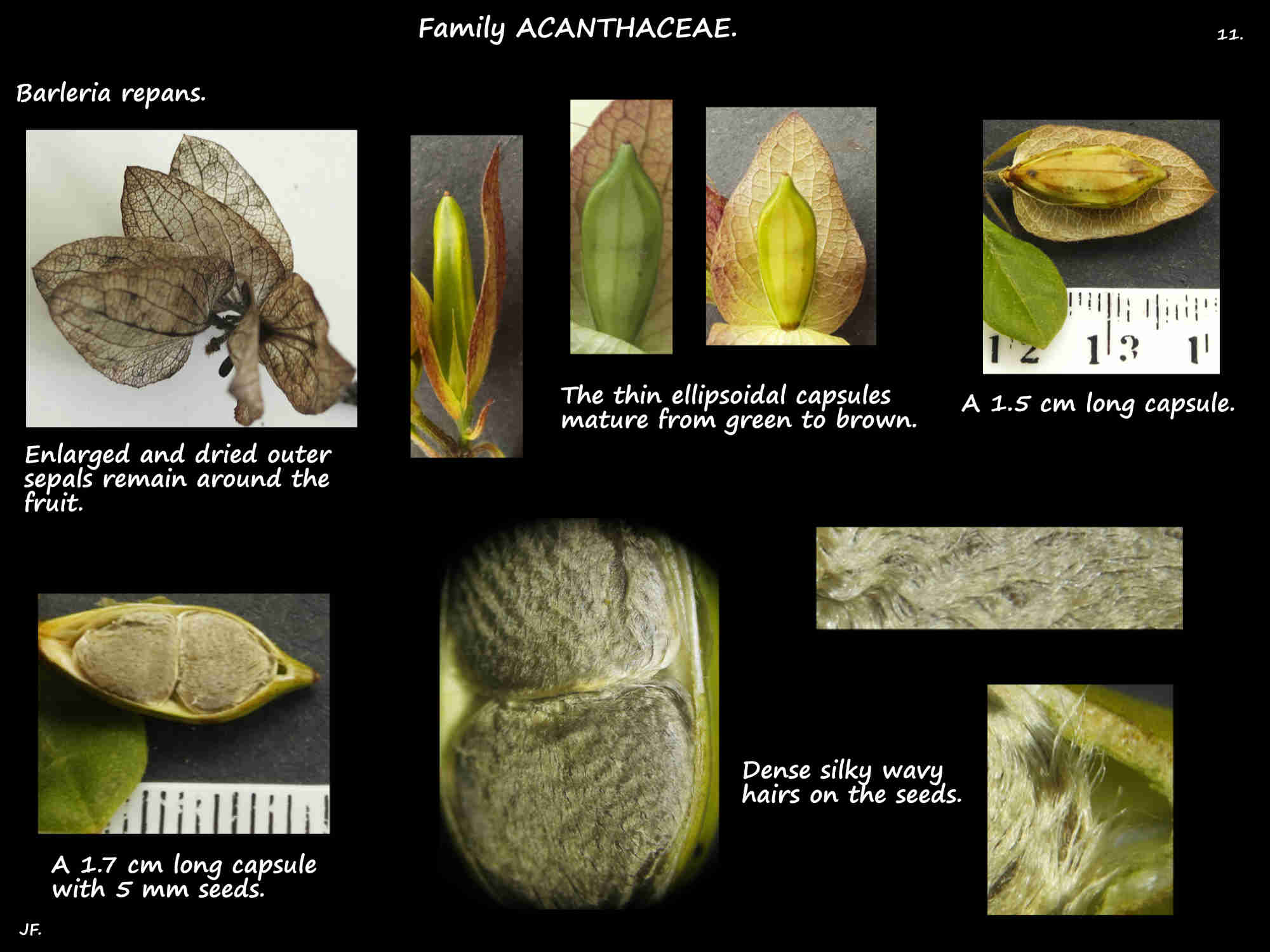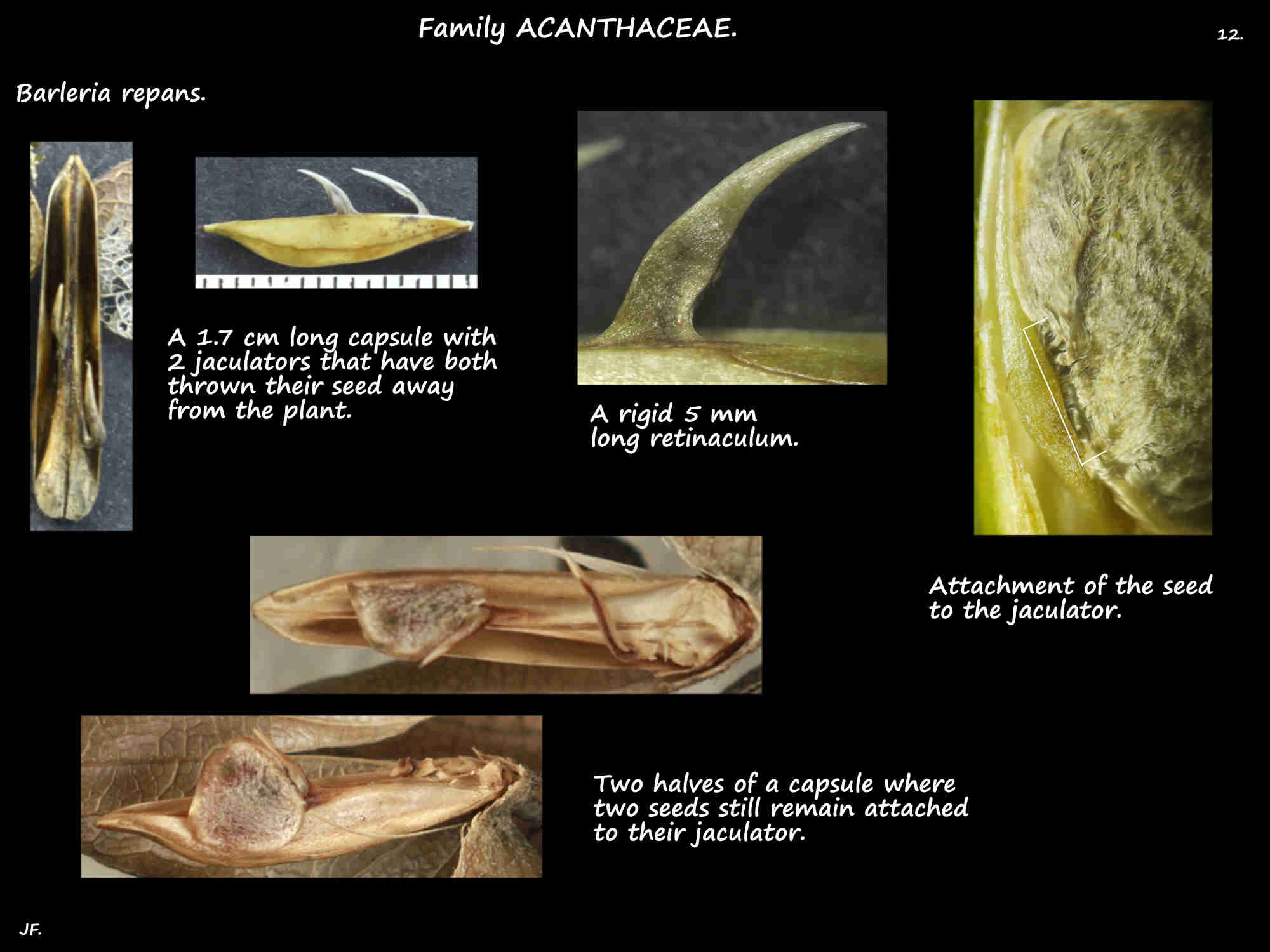Barleria repans.
Coral Bells, Creeping or Red Barleria is from Africa.
It is just starting to become a weed in S. E. Queensland and Brisbane.
They are typically shrubby plants under 1 m high but stems can be up to 2 m when they scramble
over other vegetation or supports.
They root at the nodes so can rapidly form a creeping ground cover.
Young green then green and purple stems are square in cross section.
Two opposite sides have stiff hairs that lie along the surface and point towards the end of the stem.
Older stems are woody and grooved without hairs.
The leaves, on petioles around 5 mm long are opposite and decussate.
Leaves in a pair may be of different sizes.
Often only around 3 cm long they can be up to 6 cm long and 3 cm wide.
The shiny dark green leaves are typically ovate to slightly obovate or elliptic.
The tip is rounded or slightly pointed and the edge is smooth.
The petiole and both blade surfaces have hairs mostly on the prominent veins underneath.
Axillary inflorescences are usually a solitary flower but can be a small cluster of 2 or 3.
Flowers are on a pedicel up to 5 mm long which has a pair of bracteoles on it.
The linear bracteoles, around 10 mm long and 2 mm wide have hairs on the lower or outer surface.
There are 4 sepals in the calyx with the smaller pair at right angles to, and just inside the larger pair.
The 2 outer sepals are broadly ovate with a pointed tip or a blunt tip with a small mucro.
The smaller one is around 20 mm long by 12 mm wide and the other is slightly larger.
Initially green they colour through shades of red to red-brown.
There are simple hairs on the outer surface and edge.
Because of their prominence and persistence the outer pair are often referred to as bracts.
The 2 smaller inner green sepals are narrowly lanceolate and only 5 to 6 mm long with fine hairs on the edge.
The corolla is 3 to 5 (6) cm long with a tubular base and 5 flaring lobes.
The tube is narrow at the bottom then bell or funnel-shaped up to the lobes.
There are 4 round lobes in the upper lip and a larger obovate one in the lower.
The upper pair average around 13 mm long and the lateral pair 15 mm.
The lower lobe is around 18 mm long and 13 mm wide with a notch at the tip.
The outer corolla surface has simple and glandular hairs.
Flowers seen in S. E. Queensland, both cultivated and naturalised are bright red or reddish-pink.
There are 5 stamens attached just above the middle of the corolla tube.
Two are long fertile ones that lie along the lower lip and extend past the corolla tube.
These are around 2 cm long with 3 mm long purple anthers.
Two stamens are reduced to 2 to 3 mm long staminodes which are infertile stamens.
The 5th is reduced to a staminode 1 to 2 mm long with no anther.
All have long simple hairs at the base.
There is a pale cup-shaped nectary disc around the base of the ovary.
The smooth green ovary has 2 locules with 2 ovules in each.
The long slender white style lies between the 2 long stamens along the lower lip.
The stigma is less than 1 mm long.
The fruit are smooth thin ellipsoidal capsules up to 2 cm long with 4 seeds.
The 2 outer sepals continue to grow as the fruit develops becoming brown and papery.
The flattened, almost round seeds are up to 5 mm wide and densely covered by wavy silky hairs.
The seeds are attached to the capsule by a rigid arm – the retinaculum or jaculator.
The capsules rupture explosively and can be heard from a distance.
With the pressure released the jaculators spring up and eject the seeds 1 m or more away from the plant.
J.F.

